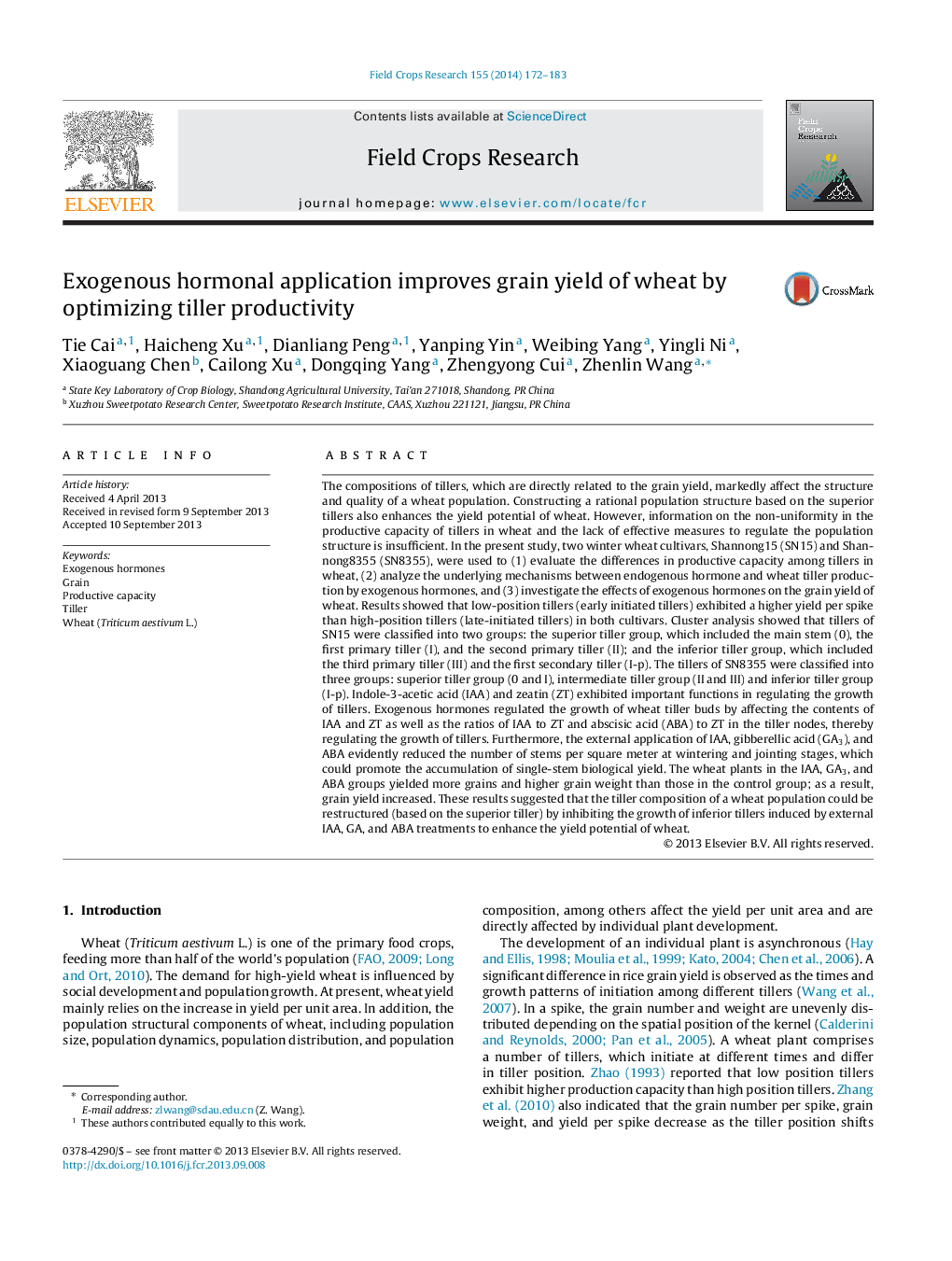| کد مقاله | کد نشریه | سال انتشار | مقاله انگلیسی | نسخه تمام متن |
|---|---|---|---|---|
| 6375086 | 1624708 | 2014 | 12 صفحه PDF | دانلود رایگان |
- We investigate the differences in productive capacity among tillers.
- IAA and ZT exhibit important functions in regulating the growth of wheat tillers.
- Exogenous hormones regulate the growth of tillers by affecting endogenous hormones.
- We present a way to enhance the yield potential of wheat.
The compositions of tillers, which are directly related to the grain yield, markedly affect the structure and quality of a wheat population. Constructing a rational population structure based on the superior tillers also enhances the yield potential of wheat. However, information on the non-uniformity in the productive capacity of tillers in wheat and the lack of effective measures to regulate the population structure is insufficient. In the present study, two winter wheat cultivars, Shannong15 (SN15) and Shannong8355 (SN8355), were used to (1) evaluate the differences in productive capacity among tillers in wheat, (2) analyze the underlying mechanisms between endogenous hormone and wheat tiller production by exogenous hormones, and (3) investigate the effects of exogenous hormones on the grain yield of wheat. Results showed that low-position tillers (early initiated tillers) exhibited a higher yield per spike than high-position tillers (late-initiated tillers) in both cultivars. Cluster analysis showed that tillers of SN15 were classified into two groups: the superior tiller group, which included the main stem (0), the first primary tiller (I), and the second primary tiller (II); and the inferior tiller group, which included the third primary tiller (III) and the first secondary tiller (I-p). The tillers of SN8355 were classified into three groups: superior tiller group (0 and I), intermediate tiller group (II and III) and inferior tiller group (I-p). Indole-3-acetic acid (IAA) and zeatin (ZT) exhibited important functions in regulating the growth of tillers. Exogenous hormones regulated the growth of wheat tiller buds by affecting the contents of IAA and ZT as well as the ratios of IAA to ZT and abscisic acid (ABA) to ZT in the tiller nodes, thereby regulating the growth of tillers. Furthermore, the external application of IAA, gibberellic acid (GA3), and ABA evidently reduced the number of stems per square meter at wintering and jointing stages, which could promote the accumulation of single-stem biological yield. The wheat plants in the IAA, GA3, and ABA groups yielded more grains and higher grain weight than those in the control group; as a result, grain yield increased. These results suggested that the tiller composition of a wheat population could be restructured (based on the superior tiller) by inhibiting the growth of inferior tillers induced by external IAA, GA, and ABA treatments to enhance the yield potential of wheat.
Journal: Field Crops Research - Volume 155, January 2014, Pages 172-183
